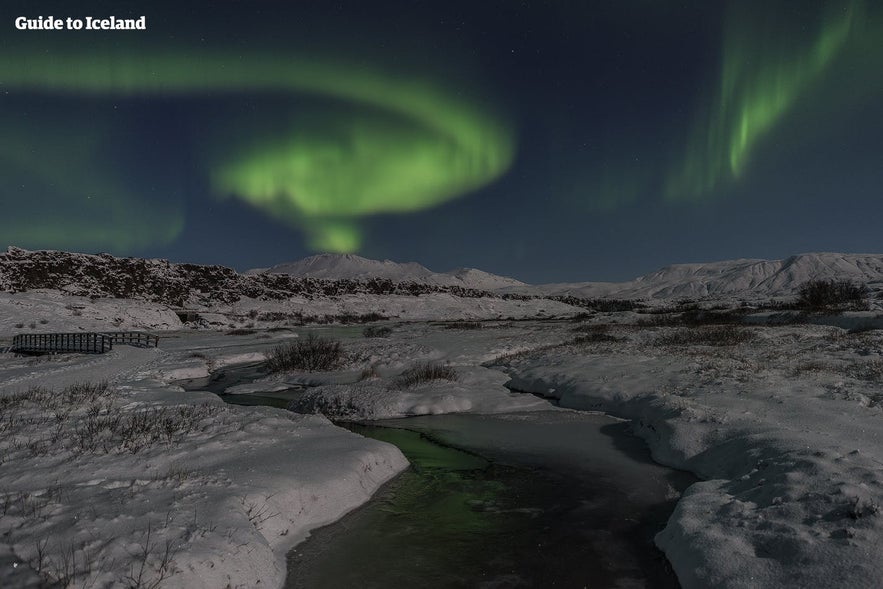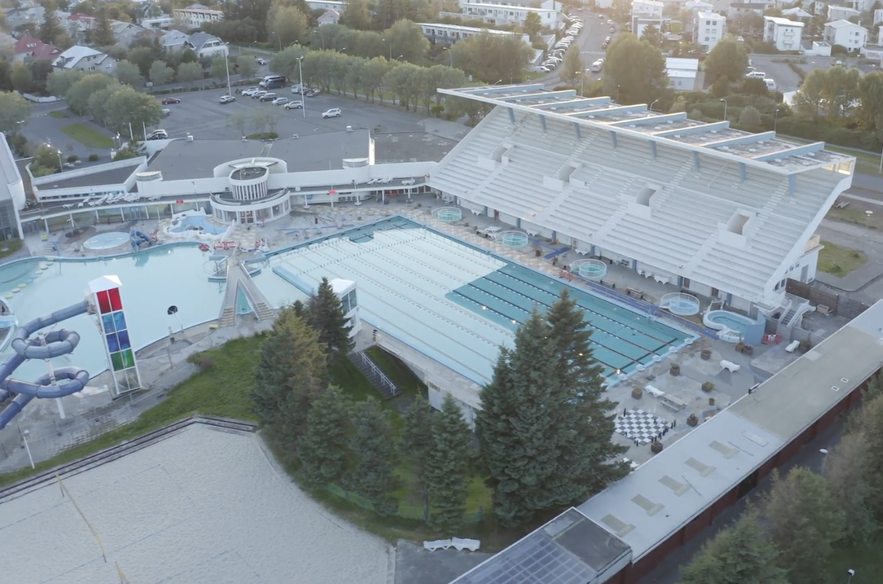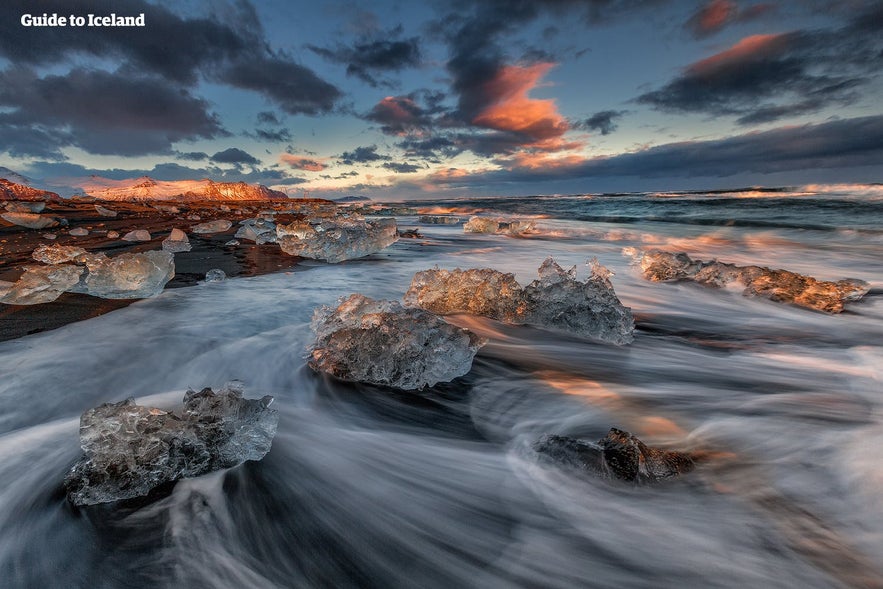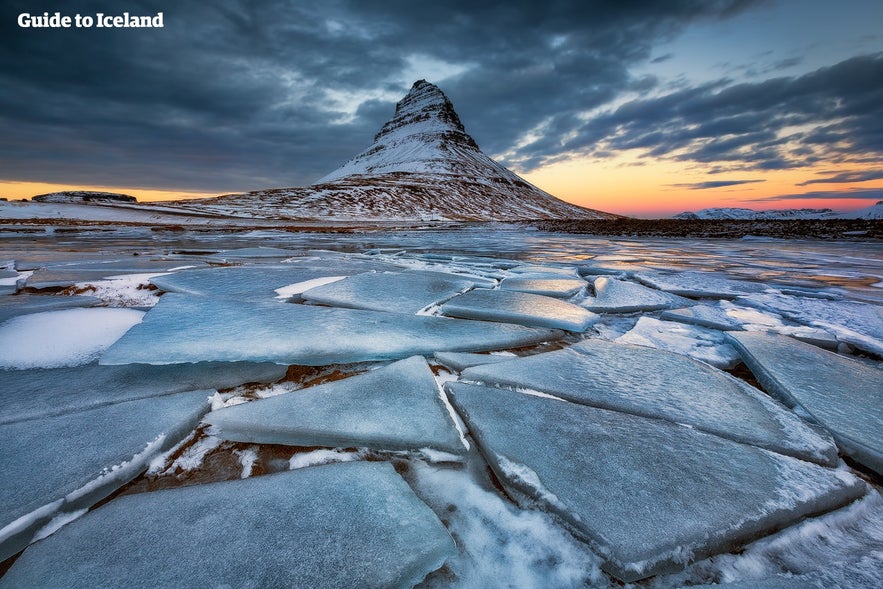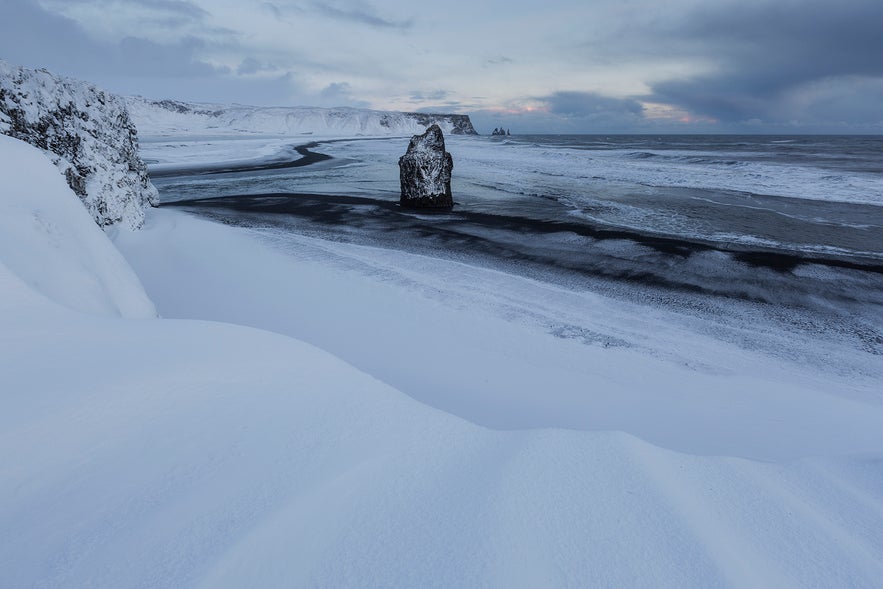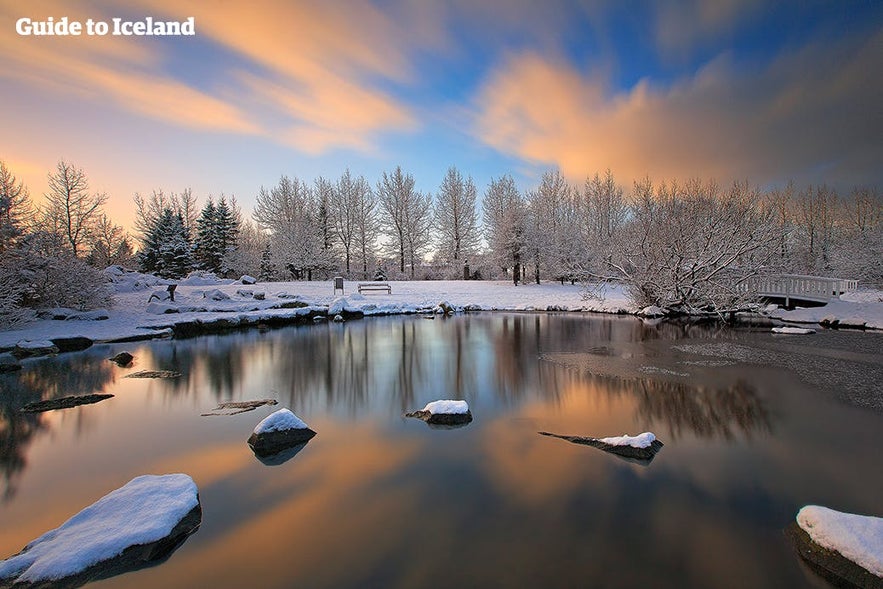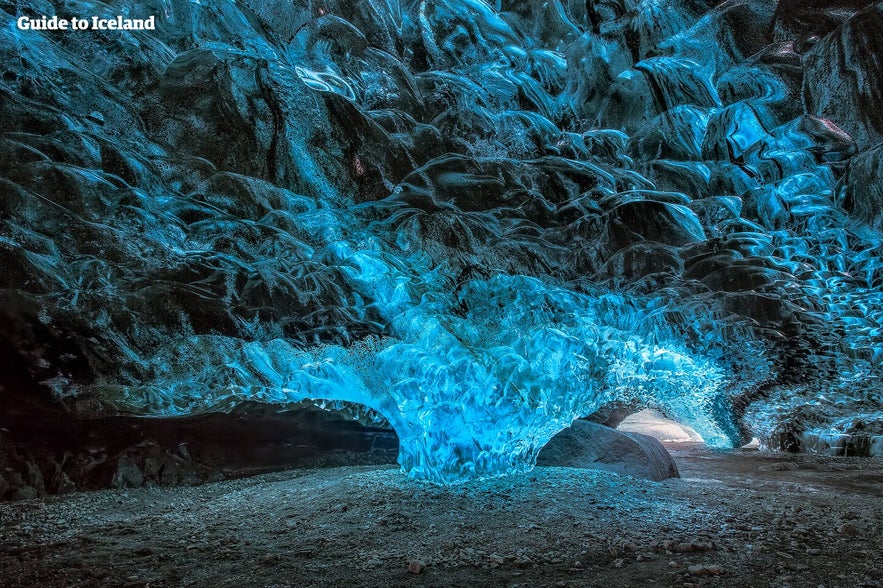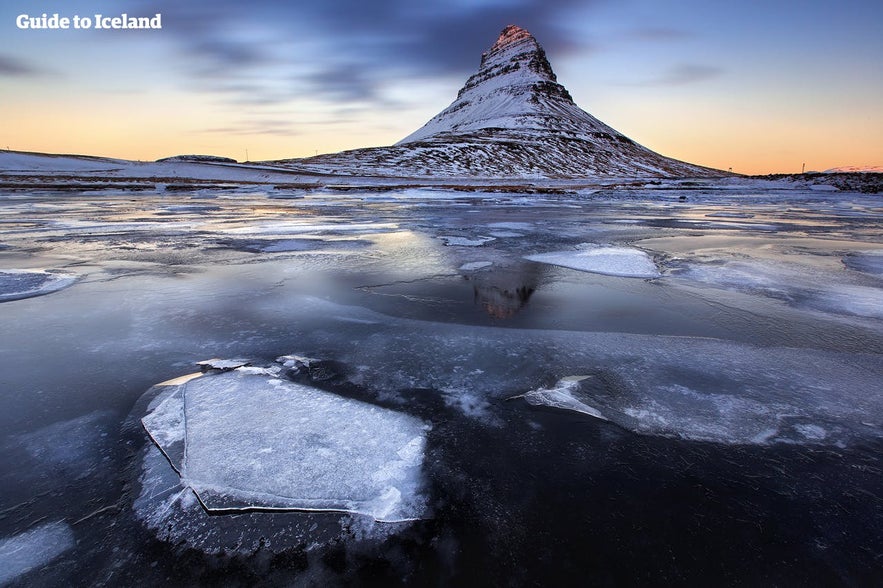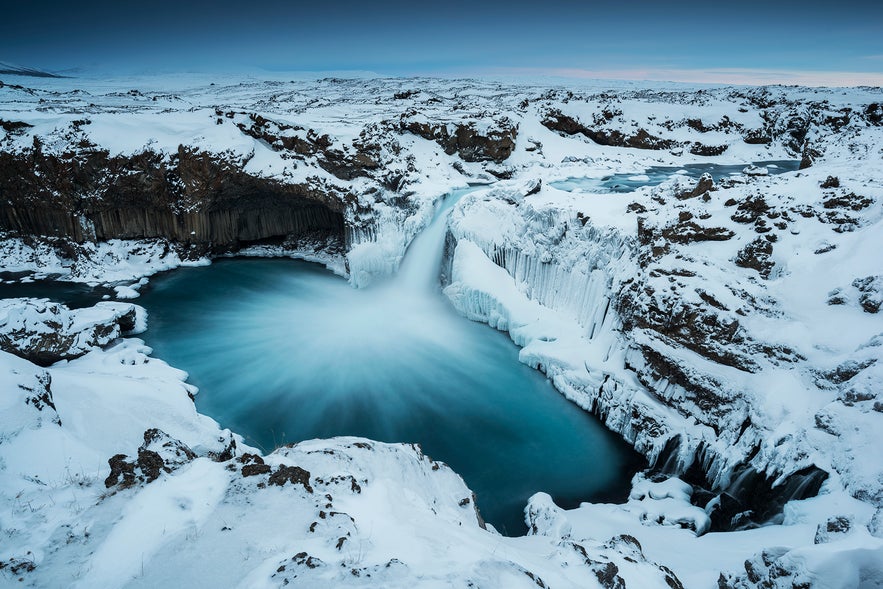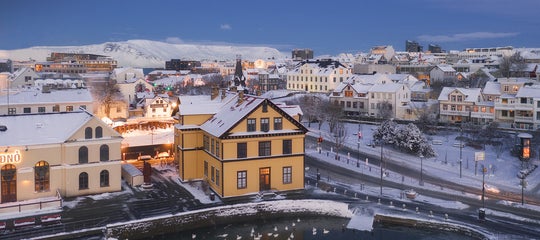
Visiting Iceland in February | The Ultimate Guide
- What to Know About Iceland in February
- Driving in Iceland in February
- Weather in Iceland in February
- What To Wear in February in Iceland
- Daylight Hours in Iceland in February
- Is the Blue Lagoon Open in February?
- Things To Do in Iceland in February
- Spotting The Northern Lights in Iceland in February
- Ice Caving in Iceland in February
- Whale Watching in Iceland in February
- Lava Caving in Iceland in February
- Swimming in Public Pools in Iceland in February
- Snorkeling in February in Iceland
- Glacier Hiking in Iceland in February
- Horseback Riding in Iceland in February
- Sightseeing in Iceland in February
- The Golden Circle in Iceland in February
- The South Coast in Iceland in February
- Lake Myvatn in Iceland in February
- Snaefellsnes in Iceland in February
- Festivals and Festivities in Iceland
- Winter Lights Festival
- Thorrablot
- Valentine's Day in Iceland
- Woman's Day
- Suggested Itineraries for Iceland in February
- The Stopover Traveler Itinerary (4 Days)
- The Getaway Traveler Itinerary (10+ Days)
Find out everything you need to know about visiting Iceland in February. Learn about the weather, what to pack, and how to prepare for your trip. Find exciting February tours and activities like whale watching, chasing the northern lights, and exploring glacier caves!
In February, most of Iceland's landscapes and towns will be draped in snow, and with more hours of darkness than light each day, it's an optimal time for northern lights tours.
Despite the dramatic climate, much of Iceland in February is still as accessible as at other times of the year. It's possible to drive the entire Ring Road during February with a rental car, but you can also stay in Reykjavik accommodations and go for day trips to many of the country's most iconic attractions.
That said, travelers should be aware that driving in Iceland in February can still be dangerous. Road conditions are frequently hazardous, weather can be unpredictable, it's very dark, and there's little road lighting outside of population centers. You'll need to rent a 4-wheel drive vehicle.
There is, however, a great benefit to visiting Iceland during this time. In February, many popular destinations will be much quieter than during the high season. In fact, for the past few years, February has been among Iceland's least crowded months, which makes it a great time to plan your trip to avoid crowds!
With many unique and exciting winter activities, you won't run out of fun things to do during your visit. Here's everything you need to know about visiting Iceland in February.
- Read about Iceland in January and Iceland in March
- See also: Iceland in Winter
What to Know About Iceland in February
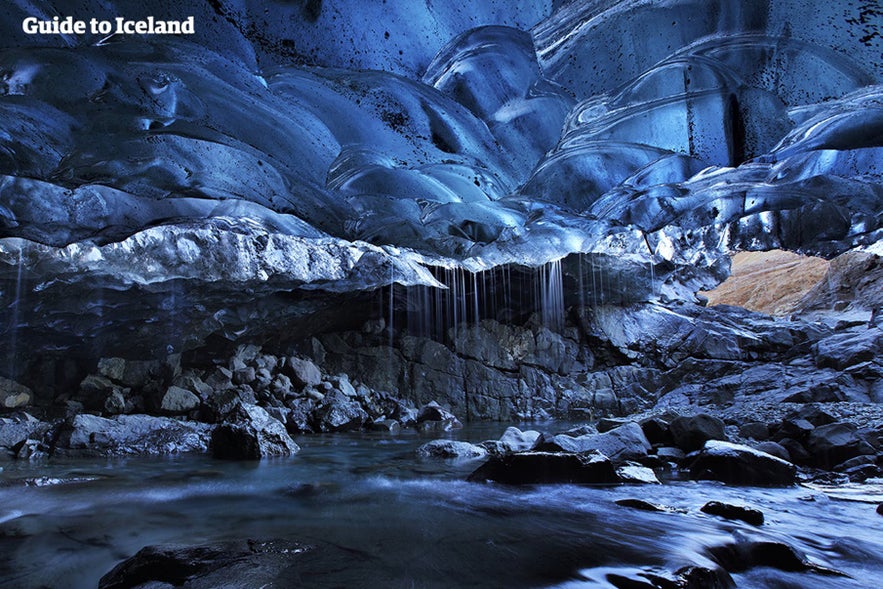
Those coming to Iceland in February are sure to have an incredible time immersing themselves in the quiet, wintry landscapes and thriving city culture. You should be aware of several things before arriving. These issues relate to keeping yourself safe, mainly with regard to driving and the weather.
Driving in Iceland in February
Video from 12-Day Northern Lights Winter Self-Drive Tour of the Complete Ring Road with Snaefellsnes Peninsula
Iceland's roads, though usually well-maintained, can be hazardous in February. In the winter months, they're ice-layered and lined with snowdrifts. Heavy rain, snowfall, and omnipresent darkness can obscure vision, and strong winds can destabilize vehicles.
Therefore, it's essential that you only rent a car if you have experience driving in hazardous conditions and on icy, rural roads. We strongly recommend a four-wheel-drive car rental for this time of year.
It's not possible to have chains on your tires, but all cars will have winter tires. Most car rental companies offer studded tires (tires with nails to add traction). We recommend that you request studded tires if they're not included in your rental.
- Check out the Best Advice For Renting a Car in Iceland

Registering your travel plans is a good idea so that you can more easily be located if something goes wrong. It's also essential to check the weather website for the conditions of your route and destination before setting out. You should make sure to re-check the conditions every morning before traveling, as some areas are particularly vulnerable to dangers, such as avalanches in certain areas.
The roads into the Highlands, and many through the Westfjords, will undoubtedly be closed. Many of them are so-called mountain roads or "F-Roads," which are only open during summer. In case you're wondering, the "F" stands for "fjall", which is the Icelandic word for mountain.
Be careful where you park to avoid getting stuck in the snow. Most insurance packages don't include towing charges, and you'll have to pay a hefty fee for assistance if required.
You must never cross a road that's closed off, and you must never drive off-road. Doing such a thing in summer is ridiculous and damaging enough (not to mention illegal with huge fines and potential prison time), but it can be fatal in winter.
Weather in Iceland in February
The average temperature in February in the capital, Reykjavik, is 33.8 F (1 C). It's also one of the country's wetter months, with an average of 3.3 inches (83 millimeters) of precipitation.
February weather in Iceland is notorious for its unpredictable turns, and you'll probably get caught in snow, wind, and rain during your stay -- possibly even all on the same day!
The long nights are cold and dark, though the hours of light will continue to increase during your trip by nine minutes every day. Snow, once settled, brings light to the dark. On clear, cold nights, the northern lights are most visible, so bundle up and turn your eyes toward the sky.
- Learn more: The Weather & Temperature in Iceland
What To Wear in February in Iceland
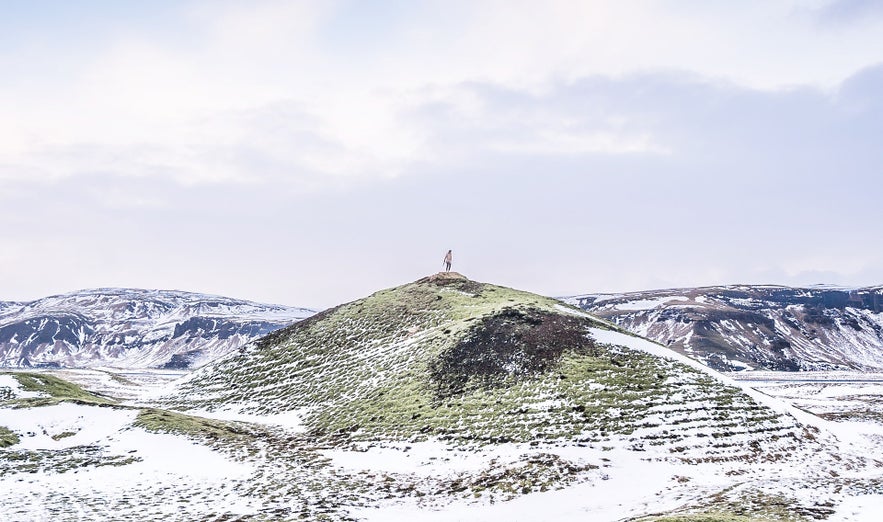 As you would expect, when traveling to Iceland in February, you should take plenty of warm clothes with you.
As you would expect, when traveling to Iceland in February, you should take plenty of warm clothes with you.
-
Hiking boots: Even if you're planning to stay only in Reykjavik, it's a good idea to wear hiking boots. The streets can be icy - that could either be fresh ice or melting ice. You could certainly wear regular shoes, but your feet could get soaking wet and cold.
-
Gloves: Wearing high-quality, warm gloves is a must. The best options are leather gloves with an inner fleece lining.
-
Wind and waterproof pants: When venturing off far from Reykjavik, the weather can be unpredictable. It'll most likely be windy and wet, so you should definitely wear these items in Iceland in February.
-
Swimming suit: This one may not be so obvious, but if you plan to visit one of the many hot springs, geothermal pools, or lagoons in Iceland or go snorkeling in Silfra, you'll want one.
As a general rule, you should wear warm layers like scarves, hats, and gloves. For comfort and ease of packing, fleece and wool items are the best options.
- Discover What to Wear in Iceland: The Ultimate Guide for All Seasons
- See also: What to Pack for Travel in Iceland
Daylight Hours in Iceland in February
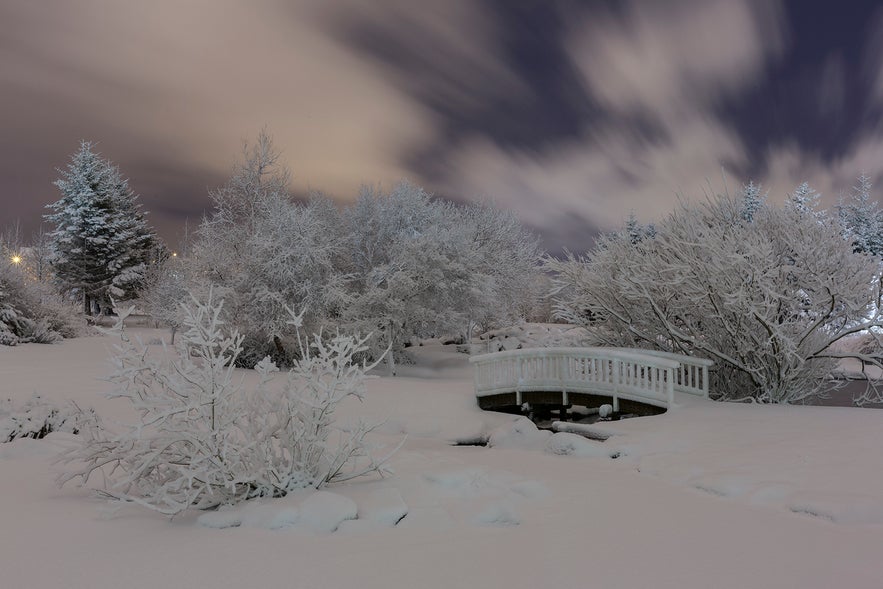 When visiting Iceland in February, you'll find that they days are still relatively short. As the month progresses, you can expect slightly more daylight, so here's how the start of February compares to it's last day.
When visiting Iceland in February, you'll find that they days are still relatively short. As the month progresses, you can expect slightly more daylight, so here's how the start of February compares to it's last day.
February 1st
- Time of sunrise: 10:07 AM
- Time of sunset: 5:16 PM
- Hours of daylight: 7 hours and 9 minutes
February 28th
- Time of sunrise: 08:38 AM
- Time of sunset: 6:43 PM
- Hours of daylight: 10 hours and 5 minutes
- See also: Dumbest Things to do in Iceland
Is the Blue Lagoon Open in February?
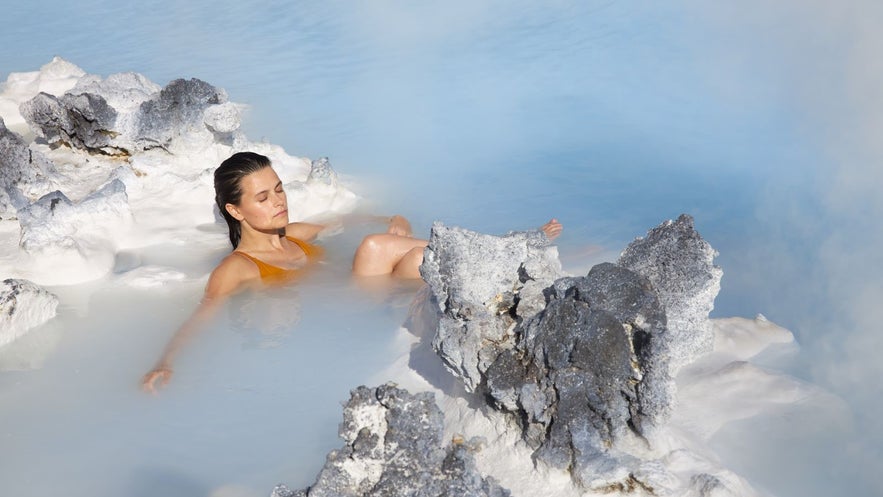 Yes, the Blue Lagoon is open in February. It's open year-round! Although the outside temperature is often below zero, visiting the Blue Lagoon and swimming in its warm waters during winter is an incredible experience.
Yes, the Blue Lagoon is open in February. It's open year-round! Although the outside temperature is often below zero, visiting the Blue Lagoon and swimming in its warm waters during winter is an incredible experience.
This is the best time for photography lovers to capture the thick steam coming out of the warm blue waters. You may also be able to spot the northern lights if you visit in the evening!
You can check out the many other fantastic geothermal spas, hot springs, and public pools all around Iceland. For a lovely moment of relaxation within the Capital Region, you can visit the Sky Lagoon, or take a trip to the picturesque Hvalfjordur fjord for a dip in the luxurious Hvammsvik Hot Springs.
There are plenty of hot spring tours available, where you can find both entry tickets, transfers, and combination experiences, such as this Golden Circle and Blue Lagoon tour from Reykjavik!
- See more about the 30 Best Hot Springs and Geothermal Pools in Iceland
- See also: Blue Lagoon vs. Sky Lagoon: Which One Should You Visit?
Things To Do in Iceland in February
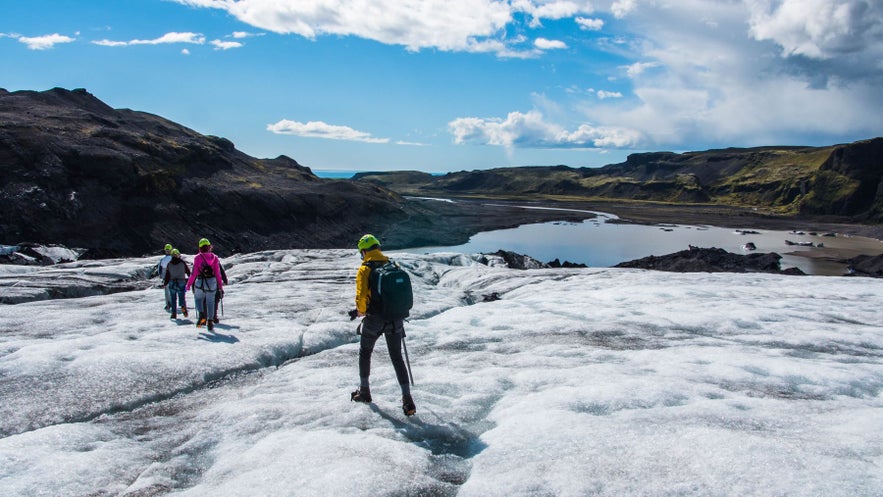 Those who heartily embrace the cold will find many things to occupy their time in an Icelandic February. Northern lights hunting is only possible during winter, and activities like ice caving in the Vatnajokull glacier are most popular at this time.
Those who heartily embrace the cold will find many things to occupy their time in an Icelandic February. Northern lights hunting is only possible during winter, and activities like ice caving in the Vatnajokull glacier are most popular at this time.
Others, like snorkeling in the Silfra fissure, develop a magical new charm in the snow and ice. Here are our recommendations for things to do in Iceland in February.
- See more: Best Winter Activities in Iceland
Spotting The Northern Lights in Iceland in February
The vast majority of travelers coming to Iceland throughout winter are likely to see the northern lights. One of the best things to do in Iceland in February is to marvel at the aurora borealis in the sky. That's because, at this time of the year, there's reduced cloud cover and dark skies.
The two magical ingredients to a northern lights hunt are clear skies and strong solar activity. The best spots to see them are outside of Reykjavik. That is because the light pollution in the city will compromise how bright the northern lights are. You can easily leave the city on tour, such as this affordable northern lights bus tour or this more unique northern lights cruise.

Another reason to try to see the northern lights early during your trip is that the tours can also be canceled if the forecast is of low intensity and cloudy skies.
You'll want as many chances as possible to see the northern lights, which means making time and being flexible if you don't see them the first time.
If you go hunting for the northern lights by yourself, check out the aurora forecast (anything above a 3 is considered worth setting out for) and the cloud cover forecast for the area.
If you're into photography, it's also worth making sure you have the right equipment and understand the correct settings for photographing the aurora borealis. Usually, the main requirement is staying patient while you wait.
If you want to maximize your chances, you can also book northern lights hotels for your stay. These accommodations are located in good viewing areas among nature, though you will need to rent a car as they're generally outside city limits.
- Check out How to Photograph the Northern Lights
Ice Caving in Iceland in February
If you're wondering what to do in Iceland in February, another great activity is ice caving. The opportunity to go on ice-caving tours is incredibly rare due to the sparsity and inaccessibility of glaciers and the particular conditions required for their formation.
Most ice cave tours usually begin between mid-October and early November and stop running in March. Ensure you check ahead of time that your desired tour will be available during your trip.
One of the factors that can limit the accessibility of ice caves is rainfall. After flooding, they're structurally unsound, and tours have to be canceled. Although February is a rather wet month, the average precipitation level is slightly lower than the other winter months, making it one of the more promising times to book an ice cave tour.
This season, there are two main ice caves in Vatnajokull glacier: the Western and Eastern Ice Caves. Both are equally stunning, with unique features that make them some of the most remarkable ice caves in the region. The choice of which cave depends on daily conditions, as you will always be transported to the one offering the best experience that day.
The Western Ice Cave, known for its winding, crystal-blue walls, offers a more remote and exclusive experience. To reach it, you'll embark on a thrilling monster truck ride across the glacier.
The Eastern Ice Cave is just as breathtaking, featuring its own incredible ice formations and vibrant blue hues. While it may occasionally attract more visitors, it still promises a spectacular and unforgettable adventure.
Book your exclusive ice cave tour early, as spots fill quickly due to high demand. Whether you visit the Western or Eastern Ice Cave, you’re guaranteed an awe-inspiring ice-caving experience on the Vatnajökull glacier!
Whale Watching in Iceland in February
 Photo from Classic 3-Hour Whale Watching Adventure from Reykjavik
Photo from Classic 3-Hour Whale Watching Adventure from Reykjavik
Whale-watching tours are also conducted from Reykjavik in February. In fact, they're available throughout the year. More than twenty species of cetacean can be seen in Iceland's waters.
Many of these species stay throughout the entire winter season. White-beaked dolphins, known for their social nature and acrobatic antics, are the most common species during February, and many of them feed and play in Faxafloi bay by Reykjavik.
On the other hand, harbor porpoises are harder to spot than white-beaked dolphins, even though they're also resident year-round. There are also orcas, pilot whales, and beaked whales that are all spotted on tours throughout February, as well as minke whales that didn't migrate that year.
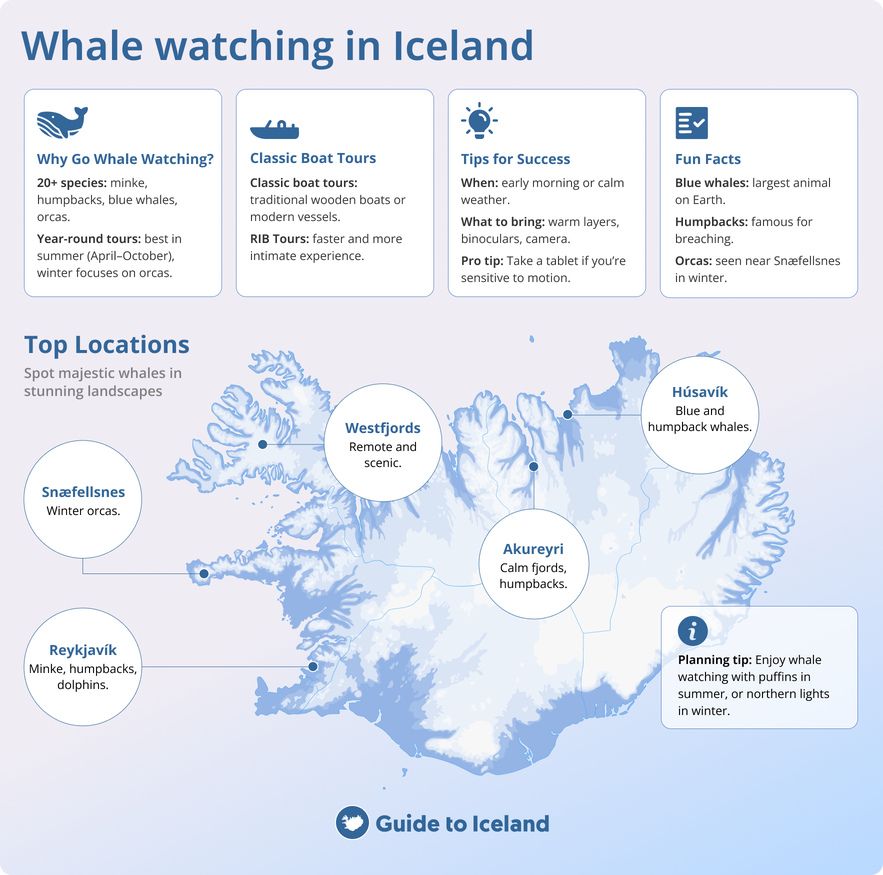
If you are partaking in a whale-watching tour, be sure to bring warm clothes to brace against the sea winds. Most operators will provide overalls that you can wear over your clothes for added comfort. But with the winds and low temperatures, wearing warm clothes is a must.
Lava Caving in Iceland in February
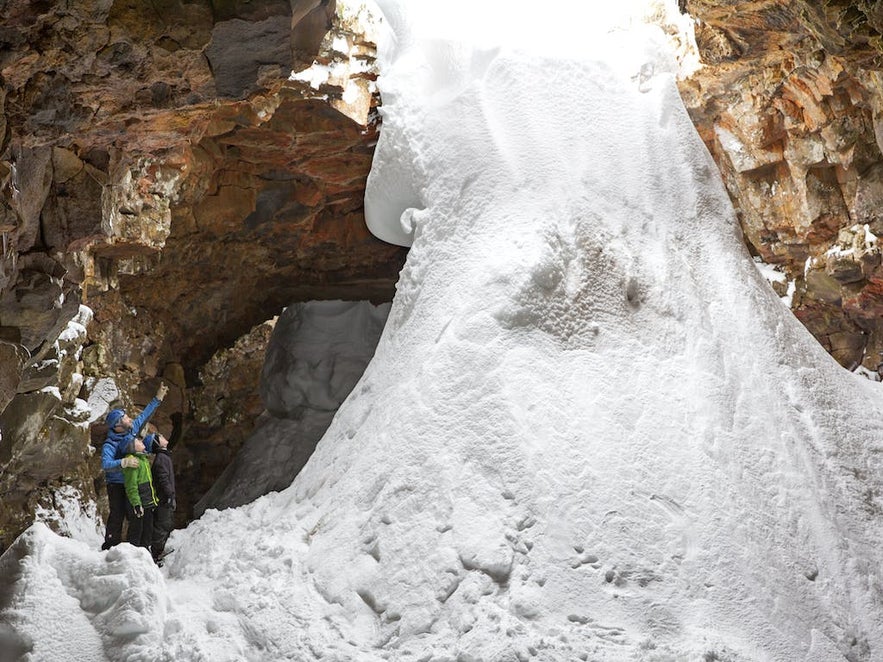
Lava caving is an enjoyable activity during February, although it's a little more daunting than in the summer months. The added appeal during February is the beautiful structures of ice that form inside the tunnels.
Because lava rock is very porous, water trickles slowly through it. When the water seeps through the caves' ceilings, it often freezes in the sub-zero temperatures before dropping, slowly forming beautiful icicles - or mini-stalactites. The water that does seep through often freezes when it hits the ground, forming equally mesmerizing ice shapes.
- Learn more about Caves in Iceland
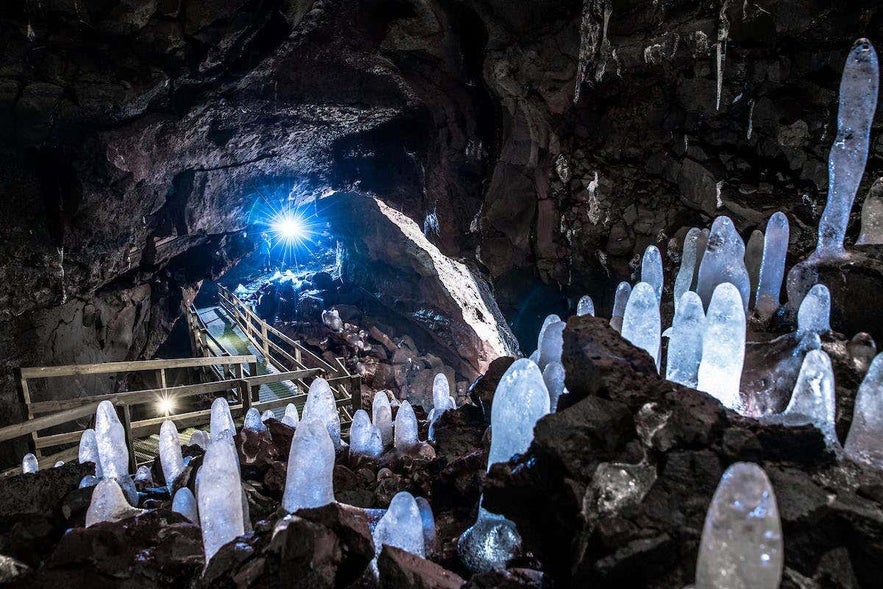 Photo from Family-Friendly 1.5 Hour Lava Cave Tour of Vidgelmir
Photo from Family-Friendly 1.5 Hour Lava Cave Tour of Vidgelmir
This ice creates a glitter effect for those exploring within and allows for some magical photos. It can also, however, make the ground incredibly slippery, so only those who feel confident on uneven surfaces should partake.
Tour operators will always provide you with crampons and a helmet, so you don't need to worry about bringing any additional safety equipment with you.
If you want easier lava cave tours, look into this classic tour of Raufarholshellir lava cave or go explore Vidgelmir cave. Both of these are wide and open, requiring no climbing or crawling, and they have walkways throughout to make your trip easier.
- See also: Top 7 Volcanic Experiences in Iceland
Swimming in Public Pools in Iceland in February
Public swimming pools in Iceland are a popular meeting place. Icelanders go swimming after work, on the weekends, and whenever they feel like relaxing with friends.
These are geothermal-heated pools and can be found in most towns around Iceland. In Reykjavik alone, there are seven public pool centers. The largest one has two Olympic-size pools (one indoor and one outdoor) as well as several smaller ones, hot tubs of different temperatures, and large public saunas.
Soaking in an outdoor heated pool while the air temperature is near or below freezing is one of the most unique and authentic experiences you'll have in Iceland.
- See more: The Best Swimming Pools in Reykjavik
- Also, check out the 30 Best Hot Springs and Geothermal Pools in Iceland
Snorkeling in February in Iceland

In February, going on snorkeling tours in Iceland may seem like an activity only for daredevils. But with modern drysuit equipment, it becomes possible for almost anyone.
The snorkeling location, the Silfra fissure, is open year-round, and it's widely considered one of the top dive sites in the world. It's also the only place where you can swim between the continents, as this is the meeting point of the North American and Eurasian tectonic plates!
Silfra is located in Thingvellir National Park. It's a ravine filled with crystal clear spring water, with visibility that exceeds 330 feet (100 meters), thrusting you into a world of magical blue light and fascinating geology.
- Learn about Scuba Diving and Snorkelling in Iceland
- See more: Tectonic Plates in Iceland and Where to Find Them
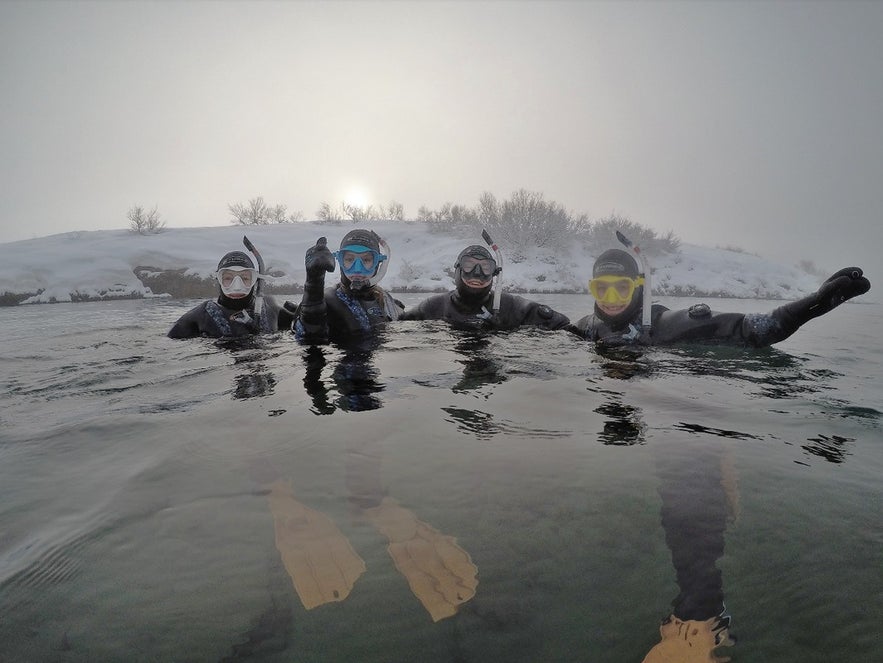
Photo from Unforgettable Silfra Snorkeling Tour with Underwater Photos & Transfer from Reykjavik
The only thing that can make this activity more wonderful is being surrounded by snow and ice while you swim. Snorkeling in a winter wonderland is a unique opportunity you can only experience in very few places worldwide and even fewer directly between two dividing tectonic plates.
It's also possible to go on diving tours in Silfra, but the participants must be qualified drysuit divers or have ten officially logged drysuit dives over the past two years.
The conditions to snorkel in Silfra are as follows (though they may vary slightly between tour providers):
-
You must be over 16 years old
-
You must be able to swim
-
You must be taller than 4 feet 7 inches (145 centimeters) and weigh more than 99 pounds (45 kilograms)
-
You must have a medical waiver if over 60 years old
-
You must have a medical waiver if over 45 years old and a heavy drinker or pipe smoker
-
You must have a medical waiver if there are underlying neurological, circulatory, or respiratory problems
-
You must not be pregnant
Glacier Hiking in Iceland in February
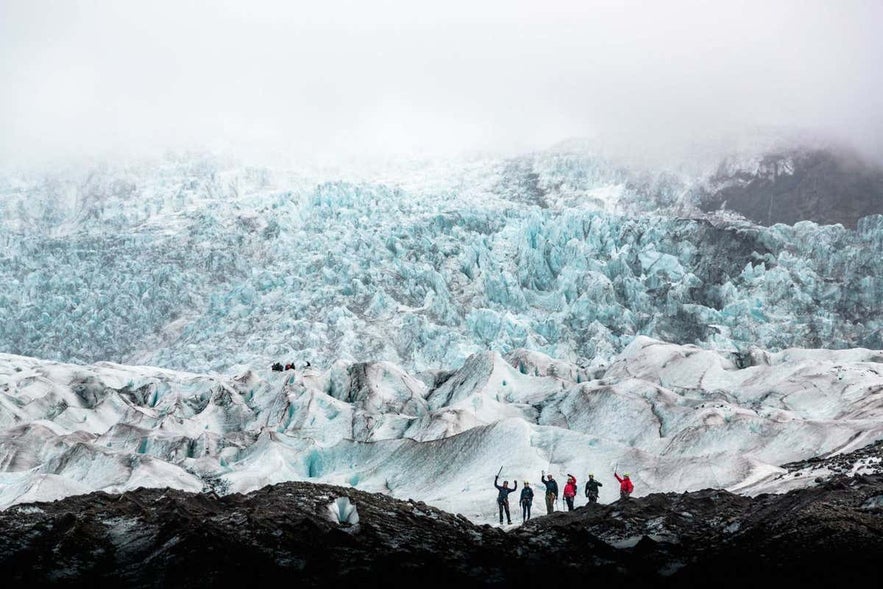
Photo from Adventurous 5-Hour Glacier Hike Tour in Skaftafell National Park
Glacier hiking tours run throughout the year in Iceland and are rewarding whenever you go. However, its appeal in February comes from the electric blue ice that covers the glaciers in midwinter and the ice caves that form across them.
The two main glaciers open for glacier hiking in February are the Solheimajokull glacier and the Svinafellsjokull glacier, both in South Iceland.
With an experienced glacier guide, you can immerse yourself in these fascinating features and learn a great deal about Iceland's geology.
- Check out the Ultimate Guide To Glacier Tours in Iceland
Horseback Riding in Iceland in February
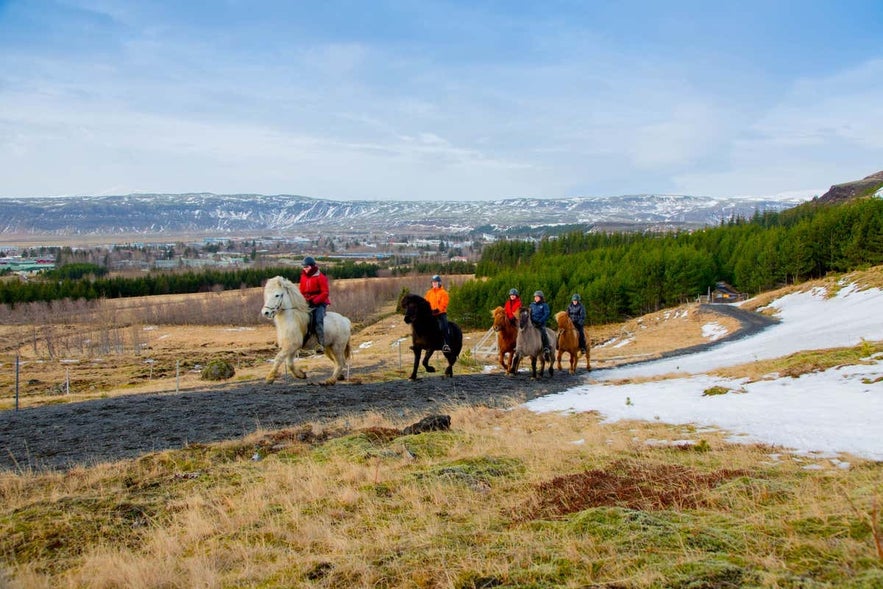
Photo from Excellent 10-Hour Golden Circle & Horse Riding Tour with Transfer from Reykjavik
One thousand years of evolutionary isolation has turned the Icelandic horse into a strong and resilient animal - even in February's cold. Unless the conditions are bordering a blizzard, they're more than happy to be outside, socialize, and play in the snow. Horse riding tours are available throughout the year.
Riding horses is a great way to immerse yourself in the winter landscapes of Iceland and to understand the history of a nation that relied on these steeds for its survival and prosperity.
In addition to resistance to the cold, Icelandic horses also have a high level of curiosity and intelligence. These traits make them an absolute pleasure to spend a morning or afternoon with.
Riding an Icelandic Horse is one of the most authentic Icelandic experiences that you can partake in when visiting the country. Don't miss it!
- Learn more: The Icelandic Horse | A Comprehensive Guide
Sightseeing in Iceland in February
Although much of Iceland's interior and parts of the Westfjords are inaccessible throughout winter, many destinations are still accessible for sightseeing. In fact, it's possible to traverse the entire Ring Road, either as part of a guided package or by driving yourself.
Most travelers coming to Iceland seek its beautiful natural sites, and in February, you won't be disappointed. Below are four of our hand-picked personal recommendations for the best sightseeing destinations in February.
The Golden Circle in Iceland in February
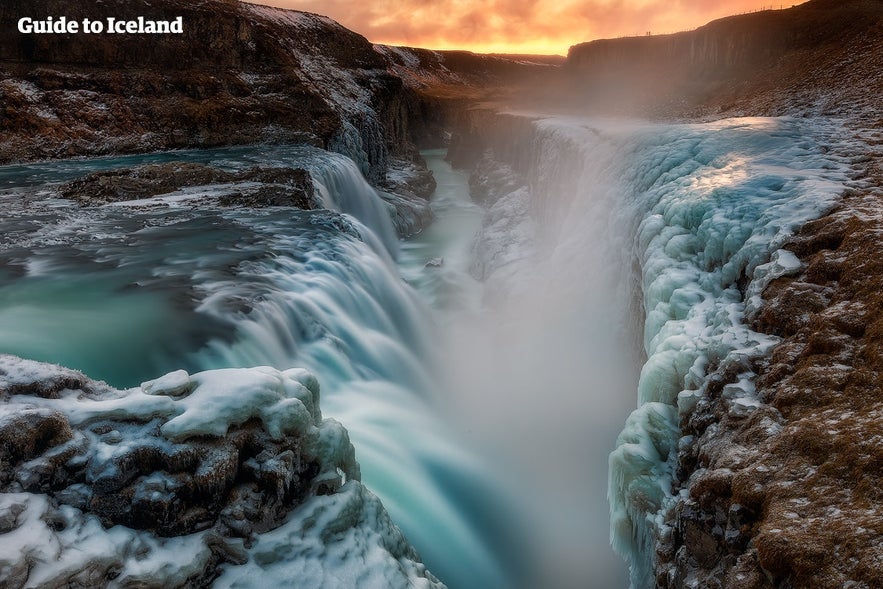
Thingvellir is beautiful under a thick blanket of snow, and many of its features, such as the Oxarafoss waterfall, are at least partially frozen.
The heat beneath the ground at the Geysir Geothermal Area makes it a plateau of multi-colored earth within a powdery white sea.
At this time of year, the Gullfoss waterfall will adorn the rocks surrounding it with crowns of frost. They will glisten beautifully beside the powerfully surging water.
Gullfoss waterfall can become even more spectacular if you're able to get just the right conditions for a shimmering rainbow.
The spectacular natural beauty that can be seen in a relatively short time makes Golden Circle tours one of the most popular activities for visitors in Iceland.
The South Coast in Iceland in February
Another beautiful region of Iceland that is definitely worth visiting in February is the South Coast. The reason is simple - it has an enormous range of landscapes and landmarks.
There are the waterfalls Seljalandsfoss and Skogafoss, the glaciers Solheimajokull and Vatnajokull, the volcanos Eyjafjallajokull, Katla, and Hekla, and awe-inspiring sites such as Skaftafell Nature Reserve, Reynisfjara black sand beach, the plane wreckage at Solheimasandur, and Jokulsarlon glacier lagoon.
South Coast tours are incredibly popular throughout the year. One thing to be aware of is the wild coast at Reynisfjara beach. There's no landmass between the Icelandic coastline and the rest of Europe, meaning that the waves have been gathering strength while traveling a great distance. These waves can emerge unpredictably and have taken many people out to sea throughout the years. Heed the warning signs, and marvel at the waves from a safe distance.
- See more: The Ultimate Guide to Iceland's South Coast
- See also: Extremely dangerous Waves by Reynisfjara in South-Iceland
Lake Myvatn in Iceland in February
The Lake Myvatn region of North Iceland is a particularly excellent sightseeing destination in winter, especially for fans of the series Game of Thrones.
Several scenes that took place north of The Wall were filmed here, such as the scenes in the wildling camp of Mance Rayder. The famous underground love scene between Ygritte and Jon Snow was filmed in Grjotagja cave.
Geological formations protrude from the frozen surface of Lake Myvatn, and the snow-topped lava at Dimmuborgir (which translates to "Dark Fortress") creates a fascinating, ice-clad spectacle.
- Learn more: The Ultimate Guide to Lake Myvatn
- See also: The Ultimate Guide to Game of Thrones in Iceland
Snaefellsnes in Iceland in February
The Snaefellsnes Peninsula is a 56-mile (90-kilometer) stretch, often called "Iceland in Miniature." Travelers here, no matter the time of year, can expect volcanoes, mountains, lava fields, stunning beaches, geological formations, fields, and historic villages.
In February, the snow will cover the peninsula mountains, the rivers and waterfalls will be partially frozen, and the craggy coasts will captivate. At this time of year, it's also not uncommon to spot orcas from the shore. Snaefellsnes, in particular, is the best spot to view orcas in February.
You can visit with Snaefellsnes tours though we recommend spending at least two days exploring the region. There's so much to see and plenty of comfortable Snaefellsnes accommodations to choose from.
- Discover the Top 16 Things to Do on the Snaefellsnes Peninsula
- See also: Top 11 Frozen Waterfalls in Iceland to See in Winter
Festivals and Festivities in Iceland
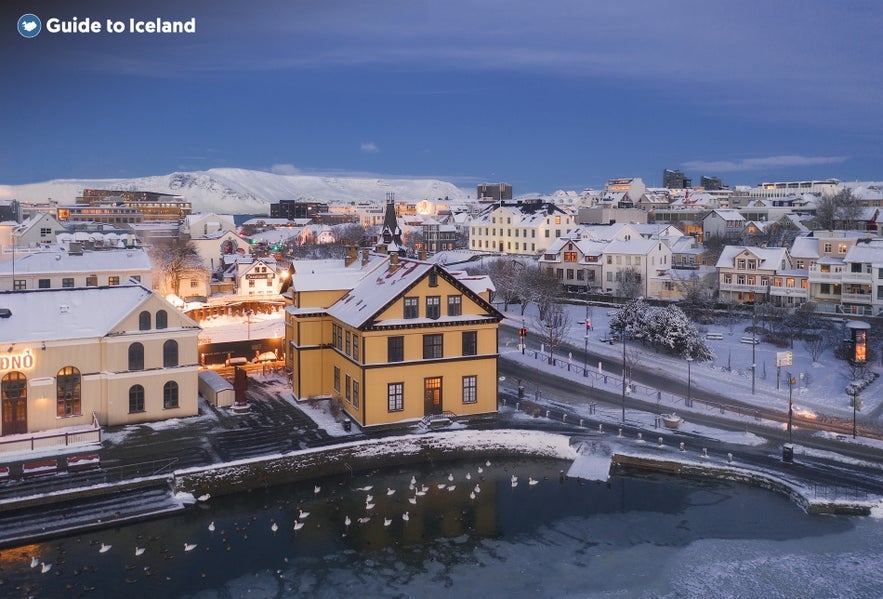 While most tourists come to Iceland seeking its natural wonders, many also come for the vibrant festival scene of Reykjavik. Not a month goes by without events gripping the capital, drawing visitors and locals alike. Below, you can find some of the major events in Iceland during February.
While most tourists come to Iceland seeking its natural wonders, many also come for the vibrant festival scene of Reykjavik. Not a month goes by without events gripping the capital, drawing visitors and locals alike. Below, you can find some of the major events in Iceland during February.
- Discover the Top 20 Festivals in Iceland
Winter Lights Festival
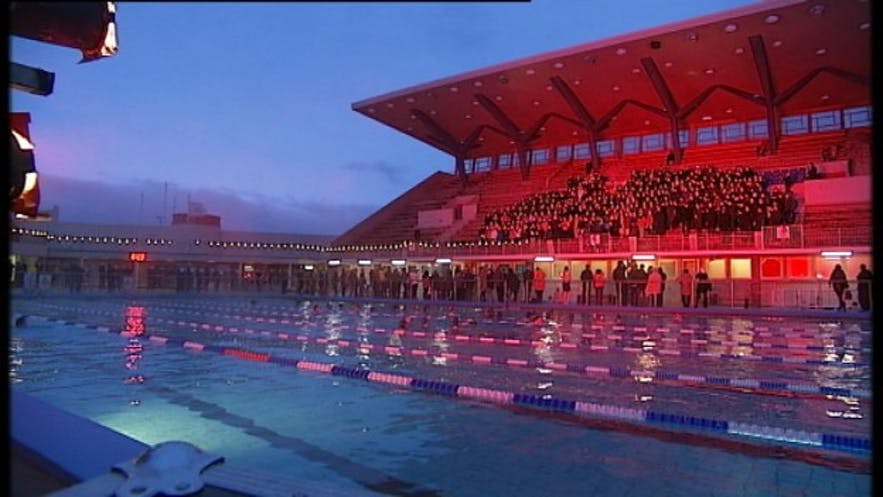
The Winter Lights Festival occurs every year on the first weekend of February. It's a celebration of the lengthening of the days and the beauty of the wintery world.
The festival begins when lights across the city are turned on. It's then followed by days of events covering everything from music to sports, art to history, and industry to culture. Two unmissable nights of the festival are Museum Night and Pool Night, when the city's museums and public pools feature some unique entertainment.
Thorrablot

Photo from Wikimedia Creative Commons
Thorrablot is a cultural festival that takes place from the end of January to the second half of February, based on the lunar month of Thorri on the old Norse calendar. During this festival, Icelanders honor their ancestors by dining on various food that have been eaten in Iceland through the centuries.
Some of the food items that are eaten during the month of Thorri, might not seem appetising to outsiders, but they were necessary for Iceland's survival for over a 1000 years.
Some of these food items include the infamous "hákarl" (fermented shark), "svið" (boiled sheep's head), or "hrútspungar" (ram's testicles). If you're not the adventurous type, there is also some great tasting traditional food such as the "hangikjöt" smoked lamb, rye bread or "rúgbrauð," or the "harðfiskur" stockfish, which goes great with butter.
Thorrablot is not typical a festival with a programme or planned events throughout the city, it's more like a month long celebration of Iceland's history and culture. Dinner parties are held for extended families or companies might have Thorrablot banquets for their employees, but there's no huge event downtown that's open to the public.
However, many of these delicacies are sold in supermarkets in Iceland during the months of January and February. So if you're visiting Iceland during that time, you can buy traditional Icelandic food and have yourself a little Thorrablot for you and your traveling party!
To make the most of the experience, you can also join this traditional Icelandic food tour or this guided food walking tour of Reykjavik.
- Learn more about Disgusting Food in Iceland
- See also: Icelandic Food: The Ultimate Guide to Iceland Food Culture
Valentine's Day in Iceland
Icelanders don't celebrate Valentine's Day like people in other countries. However, the date is slowly becoming a popular celebration, with luxury hotels and restaurants offering special packages and meals on February 14th.
If you're planning to be in Iceland on Valentine's Day, you can make it extra special by booking a table at one of the best restaurants in Reykjavik, which may be offering a special menu.
Another option is booking a spa day at the Blue Lagoon. In addition to swimming in the idyllic milky-blue warm pools, you can also have spa treatments that go from a two-hour massage to facial treatments using products such as algae, silica, and other minerals.
Woman's Day
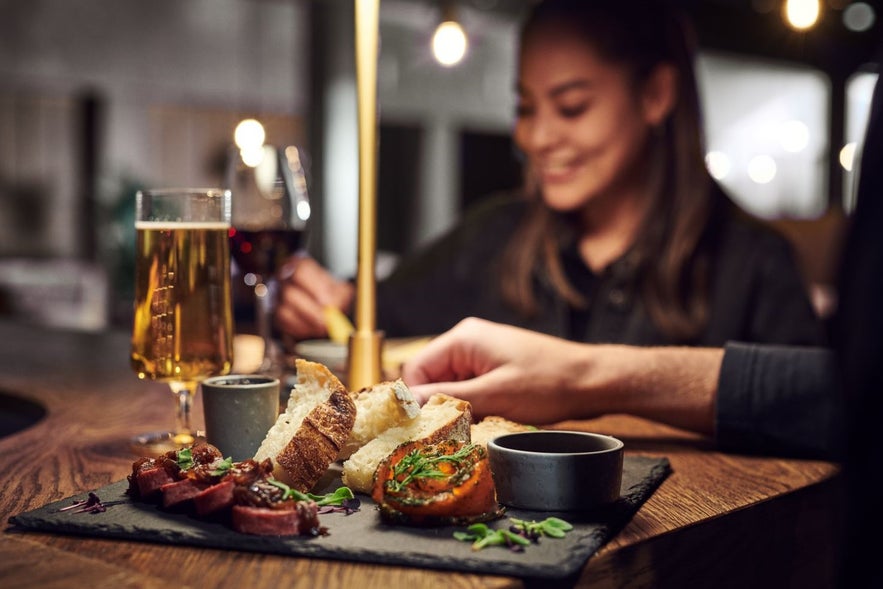 An important day on the Icelandic calendar is Woman's Day, or "konudagur" in Icelandic, which is celebrated in the second half of February. Woman's Day is an Icelandic tradition to honor the woman of the house and is tied to the Norse calendar, which has 13 months based on the lunar cycle and was used during the settlement of Iceland.
An important day on the Icelandic calendar is Woman's Day, or "konudagur" in Icelandic, which is celebrated in the second half of February. Woman's Day is an Icelandic tradition to honor the woman of the house and is tied to the Norse calendar, which has 13 months based on the lunar cycle and was used during the settlement of Iceland.
The date falls on the first day of the month of Goa, on the Norse calendar. On Woman's Day, men celebrate the important woman in their life. They bring them flowers, take them out for dinner or offer them some special presents. Woman's Day is not just a romantic festivity, as children will also give their mother flowers or presents to celebrate the day.
If you were wondering, Icelanders also celebrate Man's Day in a similar way, which is in the lunar month of Thorri (the month before Goa) and takes place in the second half of January.
Suggested Itineraries for Iceland in February
Now that you know all there is to know about touring Iceland In February, we'd like to suggest a couple of hand-picked itineraries that will help you make the most of your stay.
These suggestions are based on the number of days you have in Iceland, and you can easily amend them better to suit your tastes, plans, and budget.
The Stopover Traveler Itinerary (4 Days)
The four-day (i.e. long weekend) Stopover Traveler Itinerary begins with arrival in Iceland and taking an airport transfer bus from Keflavik International Airport to the Blue Lagoon. For this, you can book your Blue Lagoon comfort ticket with a transfer from the airport, and then to Reykjavik.
Here, you can soak in the azure waters to unwind from your flight. Once you've enjoyed a silica mask and some good relaxation, you'll head to your Reykjavik hotel and settle in. There you'll have time to wander the city taking in the sites before having dinner in one of its unique restaurants.
Since you only have a few days, you'll want to make the most of your time. For that reason, you should book a two-day tour that will take you across the South Coast, allowing you to see its many sites and explore an ice cave. That means you'll have to wake up early on the second day to meet your guide, hop into the minibus, and start the tour.
You'll get to see many of South Iceland's great sites: majestic waterfalls, otherworldly black sand beaches, and the spectacular Jokulsarlon glacier lagoon. As you reach this final destination later in the day, you'll hunt for the northern lights while checking out the glacier lagoon.
Enjoying the northern lights dancing above the Jokulsarlon glacier lagoon in greens, blues, purples, and reds, is one of the most breathtaking sights anyone can behold.
The next morning, guides will take you to the Vatnajokull glacier to explore the ice caves. This otherworldly experience, through tunnels of ethereal blue ice, will undoubtedly be your holiday's highlight.
After marveling at one of nature's greatest wonders, you'll head back along the South Coast to Reykjavik. Once in the capital, you'll check back into your hotel, then head out for a little taste of the city's nightlife.
Your departure will most likely be late afternoon on day four, leaving just enough time for a quick morning tour. We recommend this horseback ride through beautiful lava fields.
After this authentic Icelandic adventure is complete, you can catch a Flybus shuttle back to the airport, marking the end of this short but rewarding holiday to Iceland in February.
If you're able to stay another day, we recommend this mini-bus tour of the Golden Circle.
The Getaway Traveler Itinerary (10+ Days)
The Getaway Traveler Itinerary requires a minimum of 10 days to fully immerse yourself in February's winter landscapes.
We recommend that you consider this 10-day Ring Road of Iceland self-drive tour or this 10-day South Coast and Snaefellsnes peninsula self-drive tour that will allow you to explore the highlights of Iceland's magical landscape at your own pace.
However, if you have little experience driving on icy roads, you may prefer to choose from the selection of vacation packages and guided tours.
These are two of the most popular packages:
-
A 9-day minibus tour of the Ring Road, including the East Fjords and Lake Myvatn.
-
A 10-day tour that allows you to immerse yourself in the south, along with the Landmannalaugar geothermal area and the beautiful Snaefellsnes peninsula
The getaway traveler should aim to see the northern sites like Lake Myvatn without missing the Snaefellsnes peninsula.
Buying a package is the easiest way to organize your trip and ensure you make the most of your visit to Iceland in February.
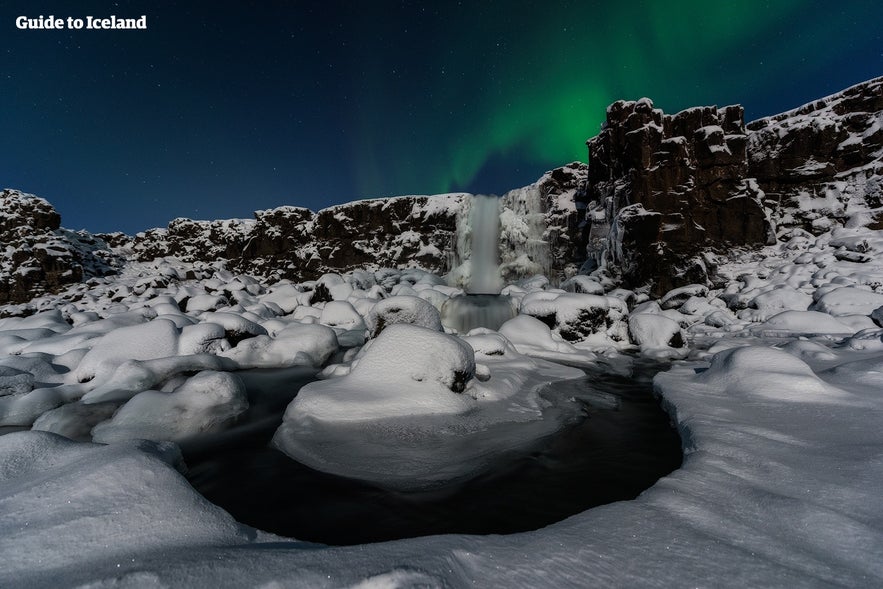
To conclude, although Iceland is still cold and dark in February, it's still a lovely place to visit, and the people are warm and welcoming!
Considering the ever-growing balance between night and day, the relative lack of crowds, and the wealth of winter activities. The month of February has a charm that's sure to make your Iceland winter vacation extra special!
Whether you're planning on a stopover or a couple of weeks visiting Iceland in February, there are many wonderful places to see and activities to do. What would you most like to try? Have you visited Iceland in winter? We'd love to hear your thoughts in the comments below!
Other interesting articles
The Most Infamous Eruptions in Icelandic History
What were the most infamous volcanic eruptions ever recorded in the history of Iceland, and how did they come to influence the country’s geography and culture? When is Iceland's next volcano due to...Read more
Visiting Iceland in January | The Ultimate Guide
Learn everything there is to know about visiting Iceland in January, one of the best months for experiencing ice caving, glacier hiking, and northern lights hunting. Learn about the best things to...Read moreThe Forests of Iceland | Foresting a Treeless Land
How did Iceland become a deforested country so quickly, and what are the native trees and vegetation that grow here? What is the future of Icelandic forests, and are there any forests that you can vis...Read more

Download Iceland’s biggest travel marketplace to your phone to manage your entire trip in one place
Scan this QR code with your phone camera and press the link that appears to add Iceland’s biggest travel marketplace into your pocket. Enter your phone number or email address to receive an SMS or email with the download link.




